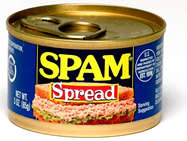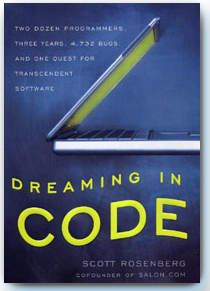I get a fair share of spam. I have something like 10 working private email addresses, I’m listed as recipient in numerous email aliases and they all end up in the same physical mailbox where I read them. I’ve also had my existing emails for many years and I’ve shown and used them publicly on the internet all the time. I’m a major spam email target now. A good day I get just 2000 spams, but bad days I’ve been well over 13000 spam emails.
My biggest friends in this combat are: spamassassin and procmail.
I’ll describe how I have things setup, not as much as to inspire others but more to be able to get feedback from you on how I can or perhaps should improve my setup to get an even better email life.
- I consider all mails with spam points >= 3 to be spam. I’ve also tweaked my spamassassin user_prefs to be harsher on (pure) HTML mail and a few other rules, and I’ve added a couple of my own rules to catch spams that previously did slip through a little too easy.
- First, I filter out mail from trusted mailing lists that have their own antispam measures.
- I catch what appears to be bounces (I have a huge regex) and if it looks like a bounce to an address I don’t send email from I nuke it immediately (and those could be a true bounce are saved in a dedicated mbox)
- I have a white-list system that marks all incoming mails from previously marked friends as coming from a friend.
- Mails from non-friends are passed through spamassassin. Those with spam points higher than N are put in the ‘hispam’ folder – of course with the intention that these are very very very unlikely to every have any false positives and can almost surely be deleted without check. N is currently 10 but I ponder on lowering it somewhat. Spams with less points than N are put in the ‘spam’ folder, and I need to check that before I kill it because it happens that I get occasional false positives that end up there.
- So, mails that aren’t from friends (or from a trusted mailing list) and aren’t marked as spam are then stored in the ‘suspicious’ mailbox
- Mails from friends or from trusted lists go directly into my mailbox, or into a dedicated mailbox (for lists with somewhat high traffic volumes).
- Oh, a little additional detail: I “mark” my own outgoing mails with an additional custom header with no point whatsoever but to be able to detect when someone/something sends me mail using my own address…
My weakest point in all this right now is the fact that I don’t spam-check white-listed mails at all, so spams that are sent to me using my friends’ email addresses go through and annoy me.
BTW, I did use bogofilter in the past and for a while I actually ran both in parallel (both trained with rougly the same spam/ham boxes for the Bayes stuff) but quite heavily testing I performed at that time (a few years ago) showed that spamassissin caught a lot more spams than bogofilter, while bogofilter only caught a few extra so I dropped it then.




 File good bug reports for bugs. Make an effort to really double-check the details, write up repeat recipes, try to repeat others’ reported bugs, fill in more details on the sparsely reported ones. Tell us when you can’t repeat already reported ones. We have so
File good bug reports for bugs. Make an effort to really double-check the details, write up repeat recipes, try to repeat others’ reported bugs, fill in more details on the sparsely reported ones. Tell us when you can’t repeat already reported ones. We have so 
 I just
I just